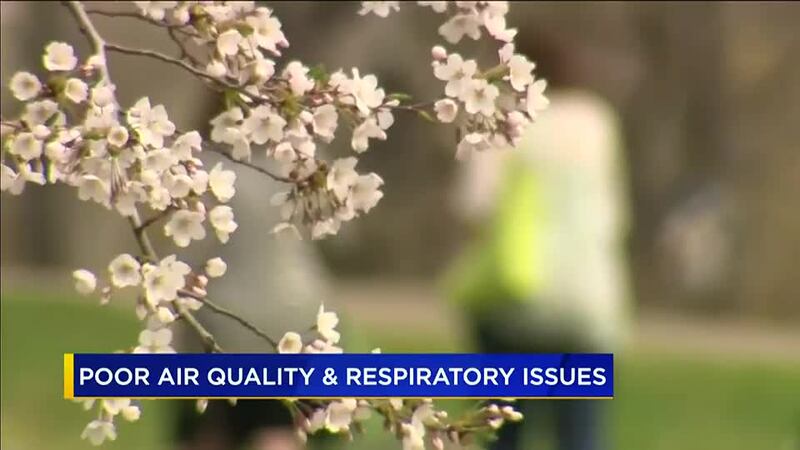SEATTLE — WASHINGTON — Exposure to air pollution may cause a long-term and severe form of sinus disease, according to new research from Johns Hopkins University.
Researchers with Johns Hopkins Medicine have found a link between air pollution and chronic rhinosinusitis (CRS), also known as inflammatory sinus disease, in what is believed to be a first-of-its-kind study.
Johns Hopkins Medicine researchers show how air pollution may cause chronic sinusitis
CRS is like severe allergies. The condition lasts 12 weeks or longer and causes the sinuses to get infected, irritated and swollen.
“As we see more and more air pollution in the future, we are going to see more patients with inflammatory sinus disease,” said Dr. Greg Davis, M.D., an ENT surgeon at Ear, Nose, Throat & Allergy Associates in Puyallup, Washington.
Davis treats patients with severe CRS.
“Usually, they’re pretty miserable. They have a lot of fatigue from the sinus inflammation. They have a lot, quite a bit of facial pressure. Their concentration tends to be worse. They often complain that their head is in the fog. … It really dramatically impacts their quality of life,” Davis said. “It has been associated with the same quality of life as patients with congestive heart failure, and that’s a big diagnosis.”
Davis said while people who have allergies are already at risk of developing CRS, the study shows air pollution puts non-allergic people at risk as well.
Specifically, researchers looked at the impact of PM2.5, fine particulate matter found in smog, haze and wildfire smoke.
“Those are the size particles that get deep into our lungs and up into our sinus tissue that cause inflammation,” Davis said.
In the Pacific Northwest, in particular, wildfire smoke is a big concern.
“Wildfire is one of the most harmful pollutions just because of the oxidation potential and just the chaos it can cause in our system,” said Davis.
Erik Claudio is one of Davis’ patients. He has suffered from asthma, allergies, CRS and nasal polyps his entire life. But when he moved to Seattle, his symptoms got worse.
“With the wildfire situation and the kind of smoke and smogginess in the air … I can tell right when I go outside, I can feel my nose start to get a little bit irritated,” Claudio said.
“I started to get hives, started to get reactions much more on a larger scale, swelling. I would wake up with puffy face, puffy lips,” Claudio continued.
Claudio’s case of CRS was so severe he developed large nasal polyps, which caused him to lose his sense of smell.
“I couldn’t smell anything,” said Claudio. “But I didn’t really start to realize it until someone pointed it out like, ‘Hey, you don’t smell that? You don’t smell that?’”
He tried everything, including over-the-counter medication, nasal rinses and sprays. He even underwent nasal surgery two times to remove the polyps.
“It was pretty scary at the time,” Claudio said.
Then he found a treatment that changed his life.
SINUVA: non-surgical management for nasal polyps - Bing video
A small, plastic device that is inserted into the nasal cavity and coated with a time-release medication that targets inflammation at the source and lasts for months.
“You can feel it up here, like, right underneath my eyes,” Claudio said as he pointed to his face.
“I’m just able to experience life at what others may see as a ‘normal’ level. For me, it’s like I’ve got a superpower now,” Claudio said.
Now, he’s breathing clearly for the first time.
“I can smell the trees. I can smell the flowers. I can smell the pine when I walk through. It’s just good to be able to take in natural resources,” Claudio said.
And while medical-driven hope is there, so are concerns for the future.
“There are some medical techniques and devices and drugs that are coming along that are possible now that we didn’t have one year ago, so treating complex patients like Erik gets a little easier,” Davis said.
“But if we don’t control the air pollution, yes, I will be more busy in the future,” Davis said. “How can we minimize the amount of air pollution we face on a daily basis? That’s really going to help the population.”
The team at Johns Hopkins is conducting ongoing research to better understand how race and socioeconomic status may contribute to air pollution exposure and, ultimately, the development of CRS.
©2021 Cox Media Group








